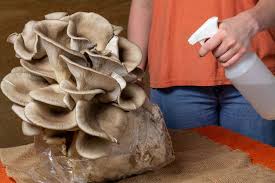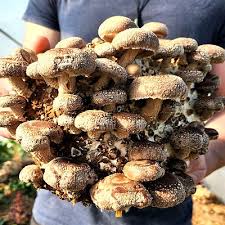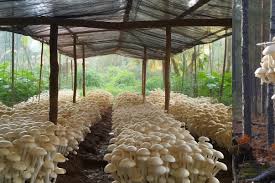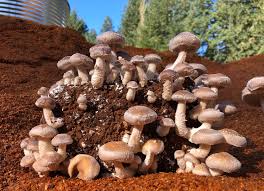Mushrooms are not only a culinary delight but also a fascinating organism with unique growing characteristics. They belong to the fungi kingdom and come in various shapes, sizes, and flavors, making them a popular choice for home gardeners and chefs alike. Growing mushrooms can seem daunting, but with the right resources and tools, it can become an enjoyable and rewarding experience.
One of the most accessible ways to cultivate mushrooms at home is through Mushroom Growing Kits. These kits simplify the process, providing everything you need to start your mushroom-growing journey.
Mushroom Growing Kits typically include pre-inoculated substrate, which is the medium that supports mushroom growth, along with clear instructions for setup and care.
Most kits are designed for beginners and can yield multiple harvests, making them an excellent investment for anyone interested in growing their own food. The convenience of these kits is one of their biggest advantages.
Unlike traditional gardening, mushroom cultivation requires minimal space and can often be done indoors. This makes it an ideal hobby for urban dwellers or those with limited outdoor space.
The types of mushrooms available in growing kits vary widely. Common options include oyster, shiitake, and portobello mushrooms, each offering distinct flavors and textures. As you become more experienced, you can experiment with different species, learning about their growth habits and preferences.
Some kits even allow you to grow specialty mushrooms, such as lion’s mane or maitake, which can be more challenging to find in stores. This variety not only adds excitement to the growing process but also enhances your culinary repertoire.
Another significant benefit of using Mushroom Growing Kits is that they can foster a deeper understanding of mycology the study of fungi. By observing the growth cycle from spores to mature mushrooms, you’ll gain insights into the life processes of these unique organisms.
This hands-on learning experience can ignite a passion for fungi and inspire you to explore further into sustainable practices and ecosystem health.
Moreover, mushrooms are known for their nutritional benefits, including high levels of protein, vitamins, and minerals. By growing your own, you ensure freshness and quality while adding a nutritious food source to your diet.
Setting up a Mushroom Growing Kit is generally straightforward. Most kits come with detailed instructions, outlining the steps needed to prepare the substrate and maintain optimal growing conditions.
Factors such as temperature, humidity, and light play critical roles in successful mushroom cultivation, and these kits often include tips on how to achieve the best results. Many kits are designed for quick results, with some mushrooms ready to harvest in as little as a few weeks.
Mushroom Growing Kits provide a fantastic opportunity for anyone interested in cultivating their own mushrooms. They simplify the process, making it accessible for beginners and offering a hands-on learning experience.
With the variety of mushrooms available and the nutritional benefits they offer, growing your own can be a rewarding endeavor. Whether you’re a foodie looking to enhance your culinary skills or a home gardener seeking a new challenge, Mushroom Growing Kits are an excellent starting point for your mushroom-growing journey.
Benefits of Using Mushroom Growing Kits

1. Accessibility for Beginners: Mushroom growing kits make it easy for anyone to start cultivating mushrooms at home, even without prior experience. They come with pre-prepared substrates and detailed instructions, eliminating the guesswork involved in traditional mushroom farming.
2. Convenience: Most kits include everything needed for successful mushroom cultivation, such as substrate, spores or spawn, and sometimes even a growing container. This convenience allows users to begin their growing journey without needing to gather multiple supplies.
3. Space-Efficient: Many mushroom kits are designed to fit in small spaces, making them ideal for urban dwellers or those with limited gardening space. They can often be placed on countertops, shelves, or balconies, requiring minimal room to grow.
4. Quick Results: Mushroom growing kits typically produce mushrooms faster than traditional cultivation methods. Depending on the type of mushroom, users can expect to see growth within a few weeks, providing quick gratification for novice growers.
5. Educational Experience: Using a mushroom growing kit provides a hands-on learning opportunity about the mushroom growth cycle, biology, and cultivation techniques. This knowledge can inspire further interest in mushroom farming or gardening as a whole.
6. Variety of Options: Many kits offer different types of mushrooms, allowing users to explore various flavors and culinary uses. From oyster mushrooms to shiitake and lion’s mane, there’s something for everyone to enjoy.
7. Minimal Maintenance: Mushroom kits require less ongoing maintenance compared to traditional gardening. With simple watering and monitoring of conditions, users can enjoy their harvest without extensive care.
Types of Mushrooms Suitable for Kits
1. Oyster Mushrooms: Oyster mushrooms are among the most popular choices for growing kits. They are fast-growing, flavorful, and versatile in cooking. Their ability to thrive on a variety of substrates makes them ideal for beginners.
2. Shiitake Mushrooms: Shiitake mushrooms are known for their rich, umami flavor and are often used in Asian cuisines. They require a bit more attention compared to oyster mushrooms but are still manageable for novice growers.
3. Lion’s Mane Mushrooms: Lion’s mane mushrooms are not only delicious but also known for their potential health benefits. Their unique appearance and flavor make them an attractive option for home cultivation.
4. Button Mushrooms: Button mushrooms, including cremini and portobello varieties, are staples in many kitchens. They grow well in kits and are great for those looking to cultivate familiar mushroom types.
5. Reishi Mushrooms: Reishi mushrooms are valued for their medicinal properties. They may require specific conditions but are available in some growing kits, appealing to those interested in health-focused mushroom cultivation.
6. Enoki Mushrooms: Enoki mushrooms are delicate and popular in salads and soups. They are suitable for kits and offer a different texture and taste compared to more common varieties.
Read Also: 16 Medicinal Health Benefits of Asarum europaeum (European wild ginger)
How Mushroom Growing Kits Work

1. Pre-Packaged Substrate: Most mushroom growing kits come with a pre-prepared substrate, which is a nutrient-rich material that supports mushroom growth. This substrate may be made from sawdust, straw, or other organic materials, and is usually sterilized to eliminate contaminants.
2. Spores or Spawn: The kit includes mushroom spores or spawn, which are the reproductive materials needed for growth. Spawn is essentially mycelium, the vegetative part of the mushroom, and is what will grow into mushrooms when placed in the right conditions.
3. Instructions for Setup: Each kit comes with detailed instructions that guide users through the setup process. This may include steps for unpacking, hydrating the substrate, and creating an optimal growing environment.
4. Ideal Growing Conditions: After setting up the kit, it needs to be placed in a suitable environment with the right temperature, humidity, and light conditions. Most kits are designed to thrive in common household environments, making them easy to care for.
5. Watering and Maintenance: Regular watering is typically required to maintain humidity levels. Users may need to mist the substrate or add water as directed in the instructions. Monitoring conditions is essential to ensure successful growth.
6. Harvesting: Once the mushrooms begin to fruit, they can be harvested as per the kit’s guidelines. Typically, mushrooms are ready to harvest within a few weeks to a couple of months, depending on the type of mushroom and conditions.
7. Continuous Growth: Some kits allow for multiple flushes of mushrooms, meaning that after the first harvest, users can continue to care for the substrate to encourage more growth. This provides additional yields from a single kit.
Choosing the Right Mushroom Growing Kit
1. Determine Your Goals: Before selecting a kit, consider your goals. Are you looking to grow mushrooms for culinary use, health benefits, or as a hobby? Knowing your purpose will help you choose the right type of mushroom.
2. Select the Mushroom Variety: Different kits grow different types of mushrooms. Common options include oyster, shiitake, lion’s mane, and button mushrooms. Research the flavors and uses of each variety to find one that suits your taste and cooking preferences.
3. Consider Space Requirements: Assess the space you have available for mushroom cultivation. Some kits are compact and designed for small areas, while others may require more room. Ensure the kit fits comfortably in your chosen location.
4. Check for Quality Materials: Look for kits made with high-quality substrates and reputable sources of spores or spawn. Reading reviews and checking the supplier’s credibility can help ensure you get a reliable product.
5. Look for Easy Setup Instructions: Choose a kit that comes with clear, easy-to-follow instructions. This will make the setup process smoother and help you successfully cultivate your mushrooms.
6. Evaluate Your Budget: Mushroom growing kits come at various price points. Set a budget and compare different options to find a kit that meets your needs without overspending.
Step-by-Step Guide to Setting Up Your Kit
1. Unpack the Kit: Carefully open the kit and remove all components, including the substrate, spores or spawn, and any additional materials. Check that everything is included as per the instructions.
2. Prepare the Substrate: If the substrate needs hydration, follow the instructions to add water. Ensure it is evenly moistened but not soggy. This step is crucial for providing the right conditions for growth.
3. Inoculate the Substrate: If the kit includes separate spawn, mix it into the substrate as directed. This is where the mushroom mycelium will grow. Make sure to handle everything with clean hands or gloves to prevent contamination.
4. Place in the Growing Environment: Find a suitable location for your kit, considering temperature, humidity, and light conditions. Most mushroom kits prefer a dark, humid environment with a temperature range of 60-75°F (15-24°C).
5. Create a Humid Environment: If needed, mist the kit with water to maintain humidity. Some kits come with humidity tents or bags to help retain moisture, while others may require regular misting.
6. Monitor Conditions: Keep an eye on the temperature and humidity levels. Adjust as necessary to create an optimal environment for mushroom growth. Avoid placing the kit in direct sunlight or drafts.
7. Wait for Growth: After a few days to a couple of weeks, you should start seeing mycelium growth. Be patient and continue to monitor and maintain conditions.
8. Harvest: Once the mushrooms are fully grown, follow the harvesting instructions provided in the kit. Generally, twist or cut the mushrooms at the base, and enjoy your homegrown produce.
Read Also: 12 Medicinal Health Benefits of Oats (Avena Sativa)
Maintaining Optimal Growing Conditions

1. Monitor Temperature and Humidity: Use a thermometer and hygrometer to keep track of the temperature and humidity levels. Adjust as needed to maintain a stable environment.
2. Watering Regularly: Regularly mist the substrate or the air around the kit to keep humidity levels high. Be cautious not to overwater, as this can lead to mold growth.
3. Ensure Proper Ventilation: Good airflow is essential for healthy mushroom growth. If your kit is covered, ensure there are enough openings to allow for air exchange without losing humidity.
4. Control Light Exposure: Most mushroom varieties prefer low light. If your kit requires light, use indirect sunlight or a low-wattage bulb for a few hours each day.
5. Clean the Growing Area: Keep the area around your mushroom kit clean and free from debris. This helps prevent contamination and promotes healthy growth.
Troubleshooting Common Issues
1. No Growth or Slow Growth: If mushrooms are not growing, check the temperature and humidity levels. Ensure they are within the optimal range. Consider if the substrate was properly hydrated and if there is enough fresh air circulation.
2. Contamination: If you notice mold or off-smells, this indicates contamination. Remove any contaminated parts immediately and ensure you’re following hygiene practices. Clean your hands and tools before handling the kit.
3. Excessive Moisture: If the substrate appears too wet, reduce misting and allow it to dry slightly. Excess moisture can lead to mold and other issues.
4. Poor Yield: If you’re getting fewer mushrooms than expected, revisit your setup process. Ensure you properly inoculated the substrate, and check the growing conditions were maintained consistently.
5. Unusual Colors or Odors: If mushrooms display unusual colors or strong odors, they may be unhealthy or contaminated. Discard any mushrooms that look or smell off, and investigate the cause.
Harvesting Your Mushrooms
1. Timing the Harvest: The best time to harvest mushrooms is when the caps are fully formed but before they start to flatten out. For most varieties, this is when the cap has opened but is still slightly curled downwards. Waiting too long can result in spore release, which can affect the taste and texture of the mushrooms.
2. How to Harvest: Use a sharp knife or scissors to cut the mushroom at the base of the stem. This method helps avoid damage to the surrounding mycelium, which allows for the possibility of further growth. Be gentle to prevent bruising the mushrooms.
3. Inspect for Quality: After harvesting, inspect the mushrooms for quality. They should be firm, dry, and free from blemishes or signs of decay. If any mushrooms appear spoiled, discard them to prevent contamination of the rest.
4. Cleaning the Mushrooms: Gently brush off any dirt or debris with a soft brush or cloth. Avoid washing them under water, as mushrooms are porous and can absorb moisture, which can affect their texture and flavor.
5. Storing Fresh Mushrooms: Freshly harvested mushrooms should be stored in a paper bag in the refrigerator. This allows them to breathe while preventing excess moisture buildup. Avoid storing them in plastic bags, as this can lead to spoilage. Properly stored, they can last for about a week.
Cooking and Storing Fresh Mushrooms
1. Preparing Fresh Mushrooms for Cooking: Before cooking, clean your mushrooms as mentioned above. Slice or chop them according to your recipe requirements. Fresh mushrooms can be sautéed, grilled, roasted, or used in soups and salads.
2. Cooking Techniques:
i. Sautéing: Heat some oil or butter in a pan, add the mushrooms, and cook until they are tender and browned. This method enhances their flavor and texture.
ii. Grilling: Skewer whole or halved mushrooms and grill until cooked through, imparting a smoky flavor.
iii. Roasting: Toss mushrooms in olive oil and seasonings, then roast in the oven until golden and tender.
3. Storing Cooked Mushrooms: If you have leftover cooked mushrooms, store them in an airtight container in the refrigerator for up to 3-5 days. Reheat before serving, ensuring they reach a safe temperature.
4. Freezing Mushrooms: Fresh mushrooms can be frozen for long-term storage. Clean and slice them, then blanch in boiling water for about 3 minutes. Immediately transfer them to ice water to stop the cooking process, drain, and pack them in airtight containers or freezer bags. Frozen mushrooms can last up to a year but may lose some texture.
Sustainability and Environmental Impact
1. Benefits of Mushroom Cultivation: Mushroom farming is considered environmentally friendly for several reasons. Mushrooms can be grown on agricultural byproducts, such as straw or sawdust, reducing waste. Additionally, they require less land and water compared to traditional crops.
2. Nutrient Recycling: Mushrooms play a crucial role in nutrient cycling. They decompose organic materials, returning essential nutrients to the soil and promoting healthy ecosystems. This process supports sustainable farming practices.
3. Reduced Carbon Footprint: Growing mushrooms at home or on a small scale reduces the need for transportation and packaging associated with store-bought mushrooms. This contributes to lower carbon emissions and a smaller environmental footprint.
4. Supporting Local Economies: By growing your own mushrooms or purchasing from local farmers, you support local economies and reduce the demand for mass-produced products, which often come with a higher environmental cost.
Frequently Asked Questions about Mushroom Growing Kits
1. What types of mushrooms can I grow with a kit?
Most kits allow you to grow common varieties such as oyster, shiitake, lion’s mane, and button mushrooms. Each kit will specify the type of mushroom it’s designed for.
2. How long does it take to grow mushrooms from a kit?
Typically, mushrooms can take anywhere from 1 to 3 weeks to grow, depending on the variety and environmental conditions. Some may grow faster than others.
3. Do I need special skills to use a mushroom growing kit?
No special skills are required! Most kits come with detailed instructions that are easy to follow, making them suitable for beginners.
4. Can I reuse the substrate after harvesting?
In most cases, once mushrooms have been harvested, the substrate is depleted of nutrients and won’t produce more mushrooms. However, some kits may allow for a second flush of mushrooms.
5. What if I notice mold growing on my kit?
Some mold growth can be normal, but if you see extensive contamination or unusual colors, it may indicate a problem. Remove the affected area and monitor the remaining substrate closely.
6. Can I grow mushrooms indoors?
Yes, many mushroom kits are designed for indoor use and can thrive in various environments, provided you maintain proper temperature, humidity, and ventilation.
7. Are there any health risks associated with growing mushrooms at home?
As long as you follow proper hygiene practices and avoid growing any wild mushrooms, home mushroom cultivation is generally safe. If you’re unsure about mushroom identification, stick to kits that use well-known species.
8. Where can I buy mushroom growing kits?
Mushroom growing kits are available at garden centers, specialty food stores, and online retailers. Ensure you choose a reputable supplier for quality products.
Do you have any questions, suggestions, or contributions? If so, please feel free to use the comment box below to share your thoughts. We also encourage you to kindly share this information with others who might benefit from it. Since we can’t reach everyone at once, we truly appreciate your help in spreading the word. Thank you so much for your support and for sharing!
Read Also: The Buying Process and Objectives

